Abstract
The left ventricular (LV) pressure-volume (P-V) relationship is a resultant of several determinants, including initial ventricular volume, geometry, and wall stiffness. A quantitative index of one of these determinants, LV wall stiffness, was developed from a mathematical analysis of the isolated P-V relationship. Since this relationship was exponential, stiffness (dP/dV) could be expressed by the equation dP/dV = aP + b, where a and b are constants. The a constant, termed the passive elastic modulus, was independent of both pressure and volume, was modified only slightly by changes in geometry, and thus was primarily affected by changes in wall stiffness. LV wall stiffness was assessed by determination of the passive elastic modulus in eight normal canine hearts and in five hearts 1 hr after acute myocardial infarction. The value of the passive elastic modulus for the normal canine LV was found to be 0.099±0.006 cc-1. In the five infarcted hearts there was a modest, but statistically insignificant, shift of the P-V curves from control, such that for the same pressure the infarcted hearts contained greater volume. However, the passive elastic modulus decreased 41% to 0.057±0.006 cc-1 (P < 0.001). Thus, although LV wall stiffness may increase later in the course of myocardial infarction, it is concluded that it was significantly decreased 1 hr after infarction. Calculation of the passive elastic modulus provided a sensitive means of detecting such changes, whereas P-V curves alone were generally insensitive.
Full text
PDF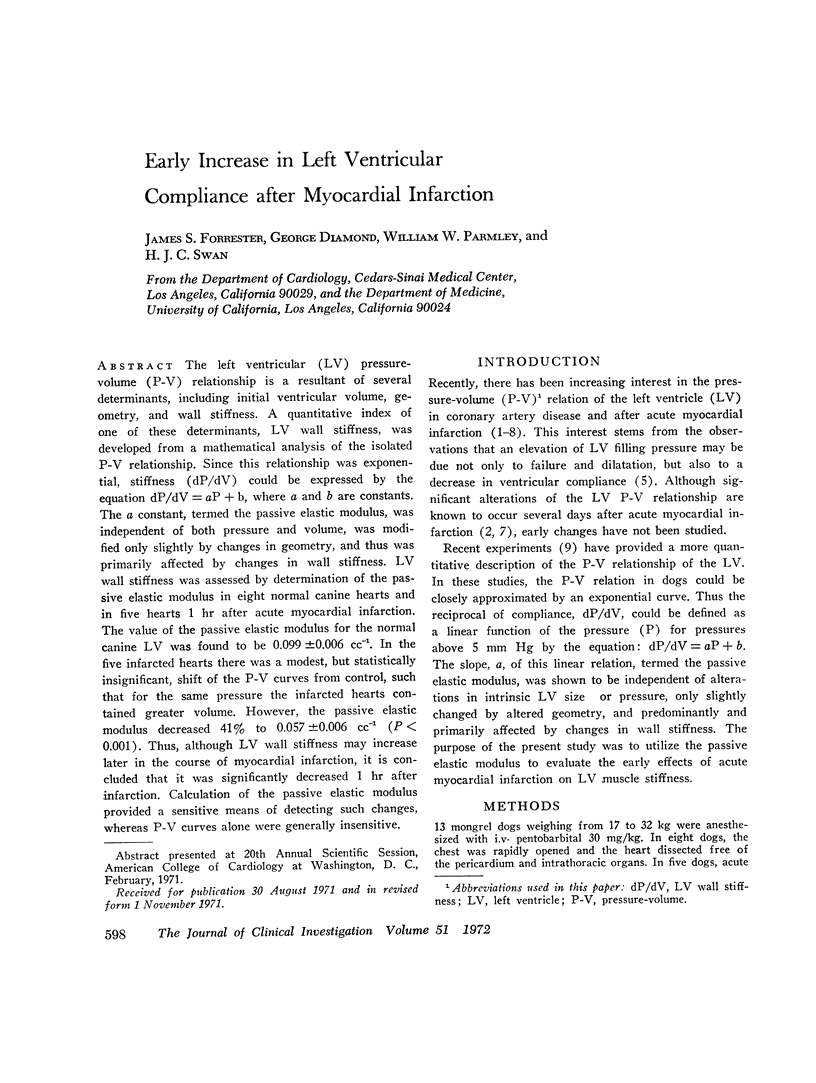
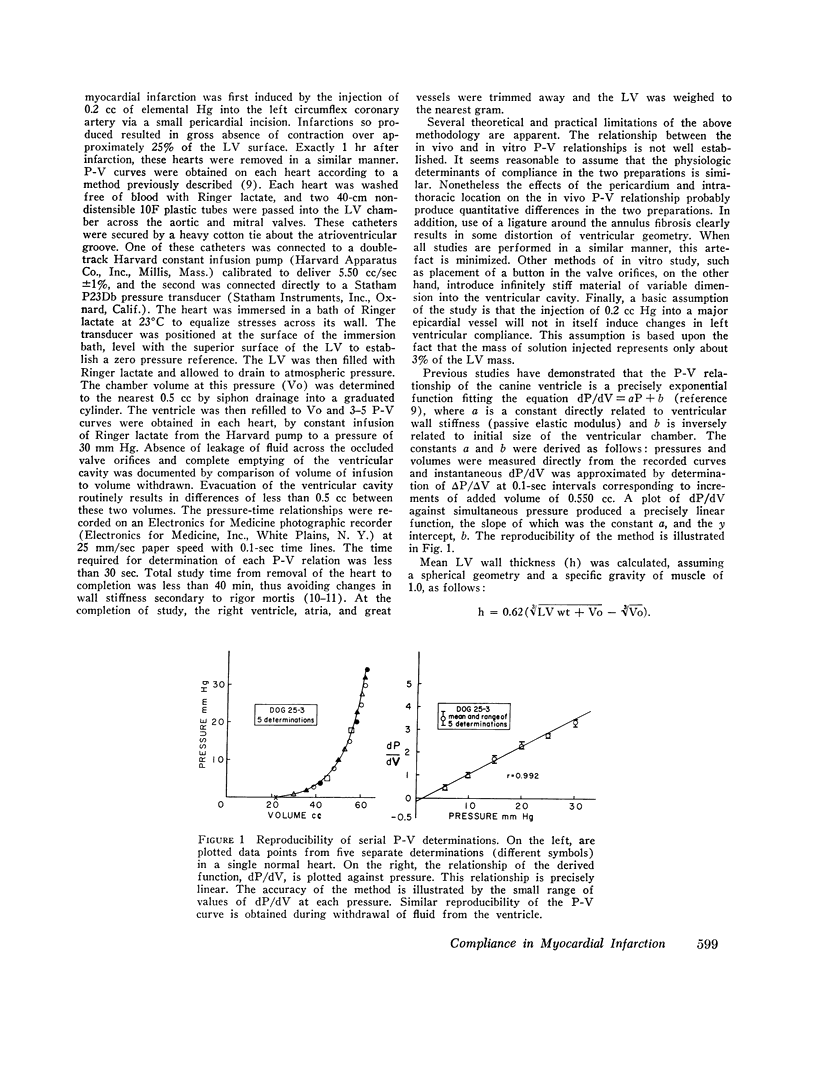
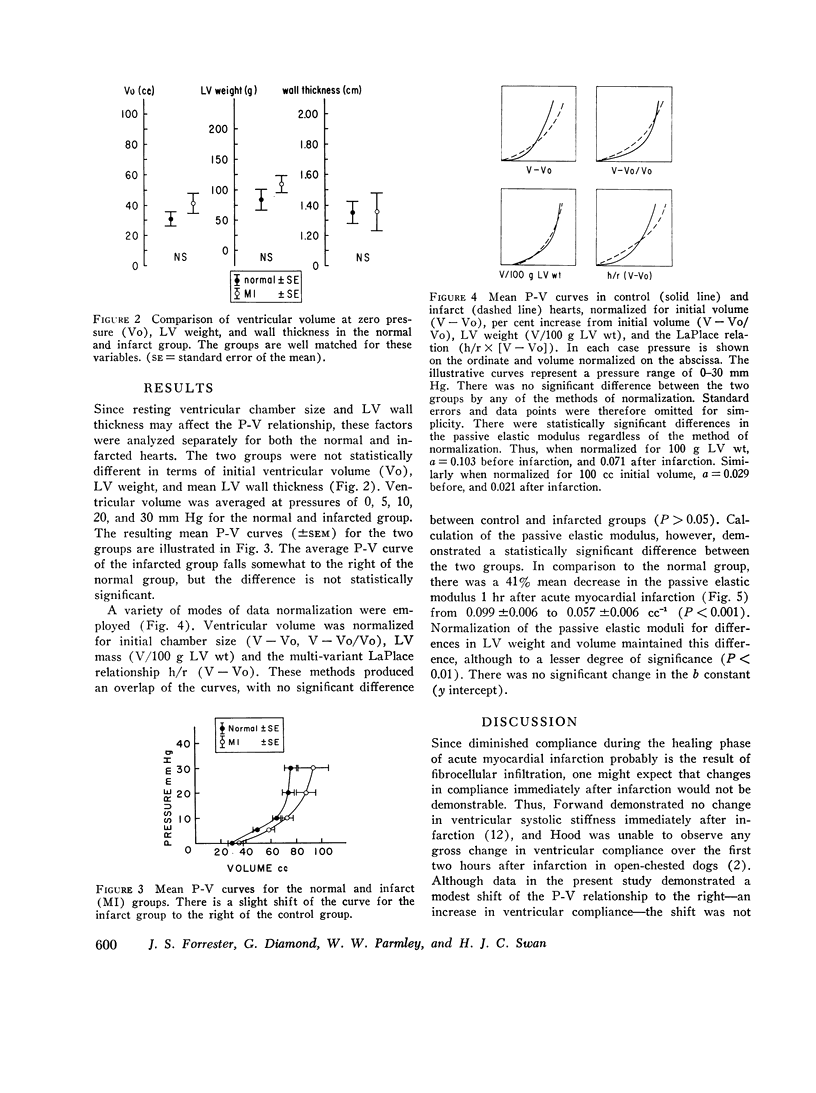
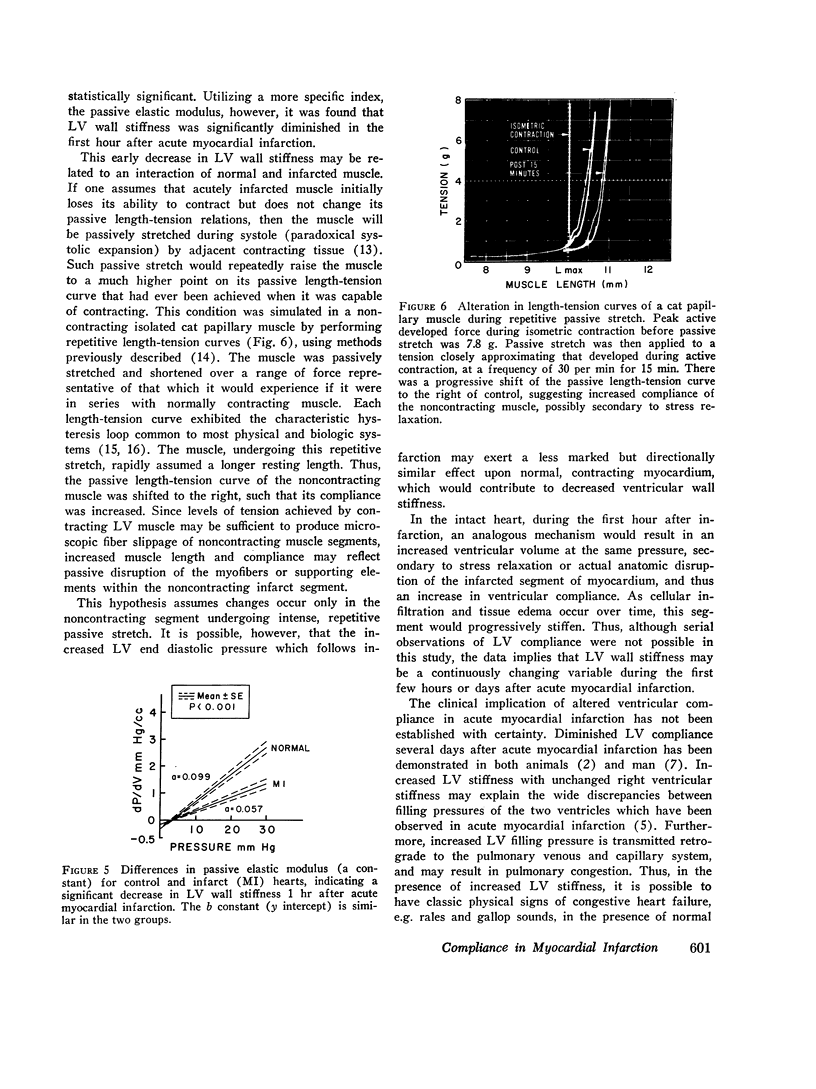
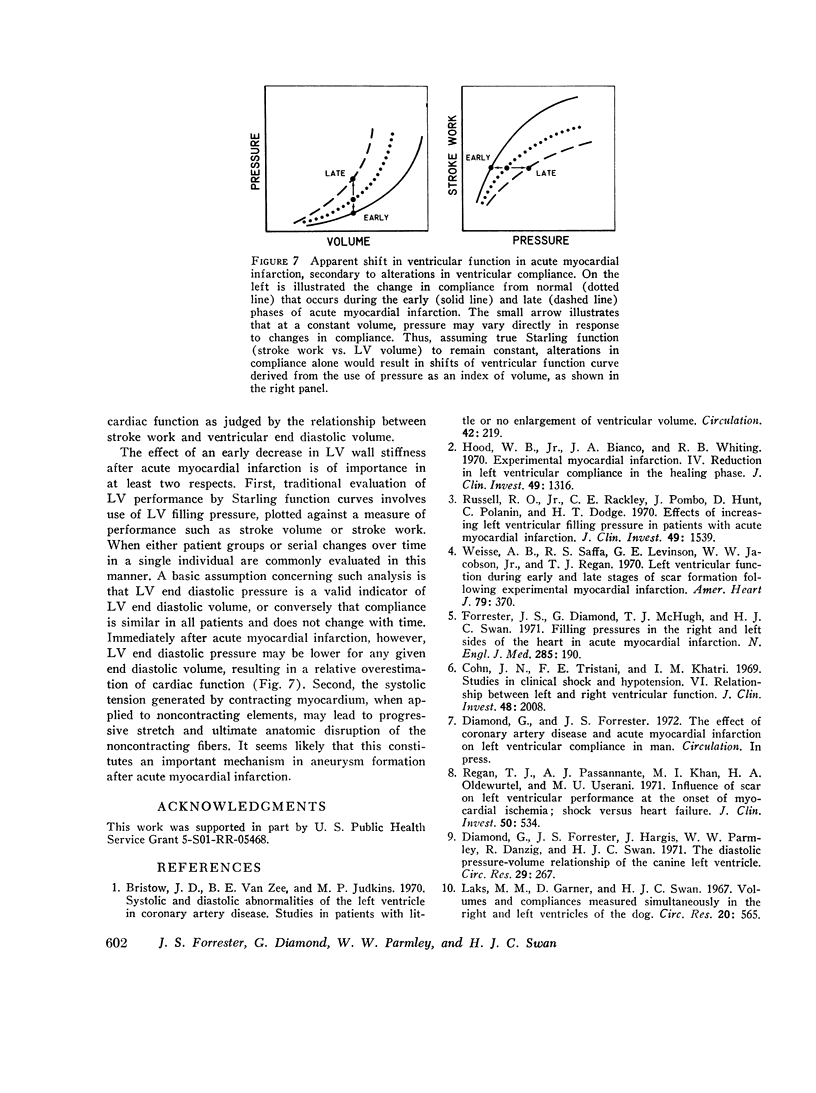
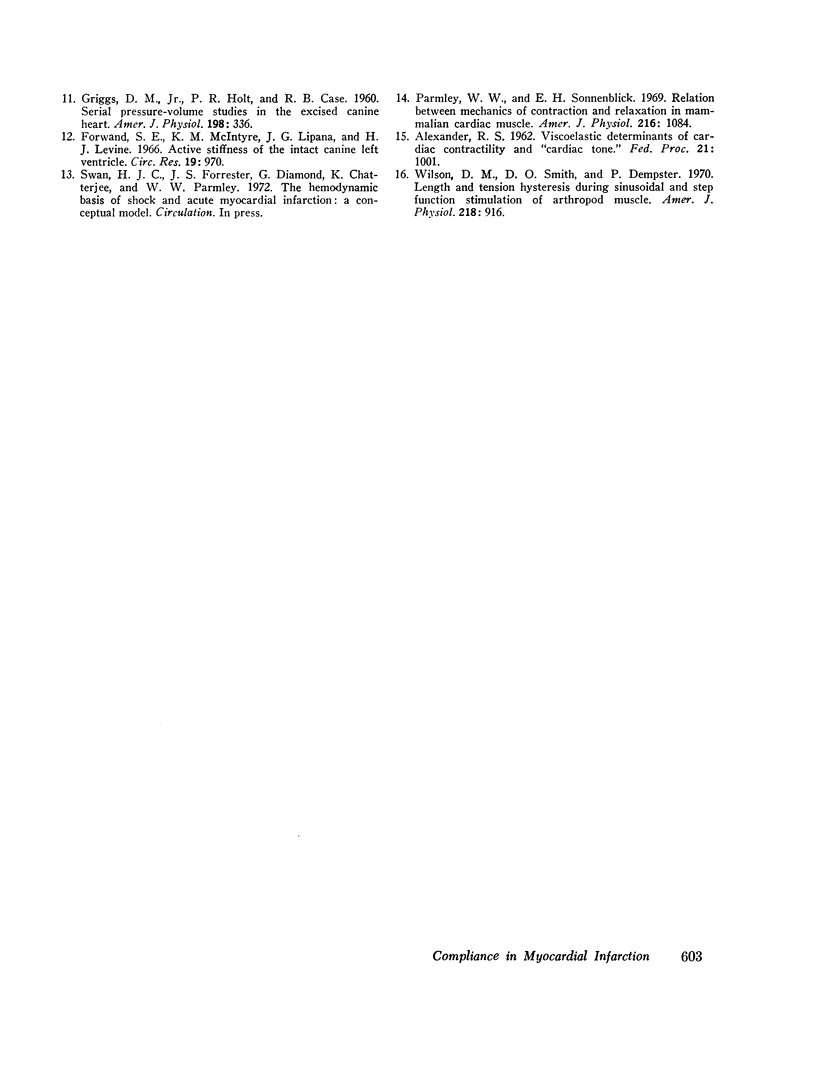
Selected References
These references are in PubMed. This may not be the complete list of references from this article.
- ALEXANDER R. S. Viscoelastic determinants of muscle contractility and "cardiac tone". Fed Proc. 1962 Nov-Dec;21:1001–1005. [PubMed] [Google Scholar]
- Bristow J. D., Van Zee B. E., Judkins M. P. Systolic and diastolic abnormalities of the left ventricle in coronary artery disease. Studies in patients with little or no enlargement of ventricular volume. Circulation. 1970 Aug;42(2):219–228. doi: 10.1161/01.cir.42.2.219. [DOI] [PubMed] [Google Scholar]
- Cohn J. N., Tristani F. E., Khatri I. M. Studies in clinical shock and hypotension: VI. Relationship between left and right ventricular function. J Clin Invest. 1969 Nov;48(11):2008–2018. doi: 10.1172/JCI106166. [DOI] [PMC free article] [PubMed] [Google Scholar]
- Diamond G., Forrester J. S., Hargis J., Parmley W. W., Danzig R., Swan H. J. Diastolic pressure-volume relationship in the canine left ventricle. Circ Res. 1971 Sep;29(3):267–275. doi: 10.1161/01.res.29.3.267. [DOI] [PubMed] [Google Scholar]
- Forrester J. S., Diamond G., McHugh T. J., Swan H. J. Filling pressures in the right and left sides of the heart in acute myocardial infarction. A reappraisal of central-venous-pressure monitoring. N Engl J Med. 1971 Jul 22;285(4):190–193. doi: 10.1056/NEJM197107222850402. [DOI] [PubMed] [Google Scholar]
- Forwand S. A., McIntyre K. M., Lipana J. G., Levine H. J. Active stiffness of the intact canine left ventricle. With observations on the effect of acute and chronic myocardial infarction. Circ Res. 1966 Nov;19(5):970–979. doi: 10.1161/01.res.19.5.970. [DOI] [PubMed] [Google Scholar]
- GRIGGS D. M., Jr, HOLT P. R., CASE R. B. Serial pressure-volume studies in the excised canine heart. Am J Physiol. 1960 Feb;198:336–340. doi: 10.1152/ajplegacy.1960.198.2.336. [DOI] [PubMed] [Google Scholar]
- Hood W. B., Jr, Bianco J. A., Kumar R., Whiting R. B. Experimental myocardial infarction. IV. Reduction of left ventricular compliance in the healing phase. J Clin Invest. 1970 Jul;49(7):1316–1323. doi: 10.1172/JCI106347. [DOI] [PMC free article] [PubMed] [Google Scholar]
- Laks M. M., Garner D., Swan H. J. Volumes and compliances measured simultaneously in the right and left ventricles of the dog. Circ Res. 1967 May;20(5):565–569. doi: 10.1161/01.res.20.5.565. [DOI] [PubMed] [Google Scholar]
- Parmley W. W., Sonnenblick E. H. Relation between mechanics of contraction and relaxation in mammalian cardiac muscle. Am J Physiol. 1969 May;216(5):1084–1091. doi: 10.1152/ajplegacy.1969.216.5.1084. [DOI] [PubMed] [Google Scholar]
- Regan T. J., Passannante A. J., Khan M. I., Oldewurtel H. A., Jesrani M. U. Influence of scar on left ventricular performance at the onset of myocardial ischemia: shock versus heart failure. J Clin Invest. 1971 Mar;50(3):534–542. doi: 10.1172/JCI106522. [DOI] [PMC free article] [PubMed] [Google Scholar]
- Russell R. O., Jr, Rackley C. E., Pombo J., Hunt D., Potanin C., Dodge H. T. Effects of increasing left ventricular filling. Pressure in patients with acute myocardial infarction. J Clin Invest. 1970 Aug;49(8):1539–1550. doi: 10.1172/JCI106371. [DOI] [PMC free article] [PubMed] [Google Scholar]
- Weisse A. B., Saffa R. S., Levinson G. E., Jacobson W. W., Jr, Regan T. J. Left ventricular function during the early and late stages of scar formation following experimental myocardial infarction. Am Heart J. 1970 Mar;79(3):370–383. doi: 10.1016/0002-8703(70)90424-2. [DOI] [PubMed] [Google Scholar]
- Wilson D. M., Smith D. O., Dempster P. Length and tension hysteresis during sinusoidal and step function stimulation of arthropod muscle. Am J Physiol. 1970 Mar;218(3):916–922. doi: 10.1152/ajplegacy.1970.218.3.916. [DOI] [PubMed] [Google Scholar]


